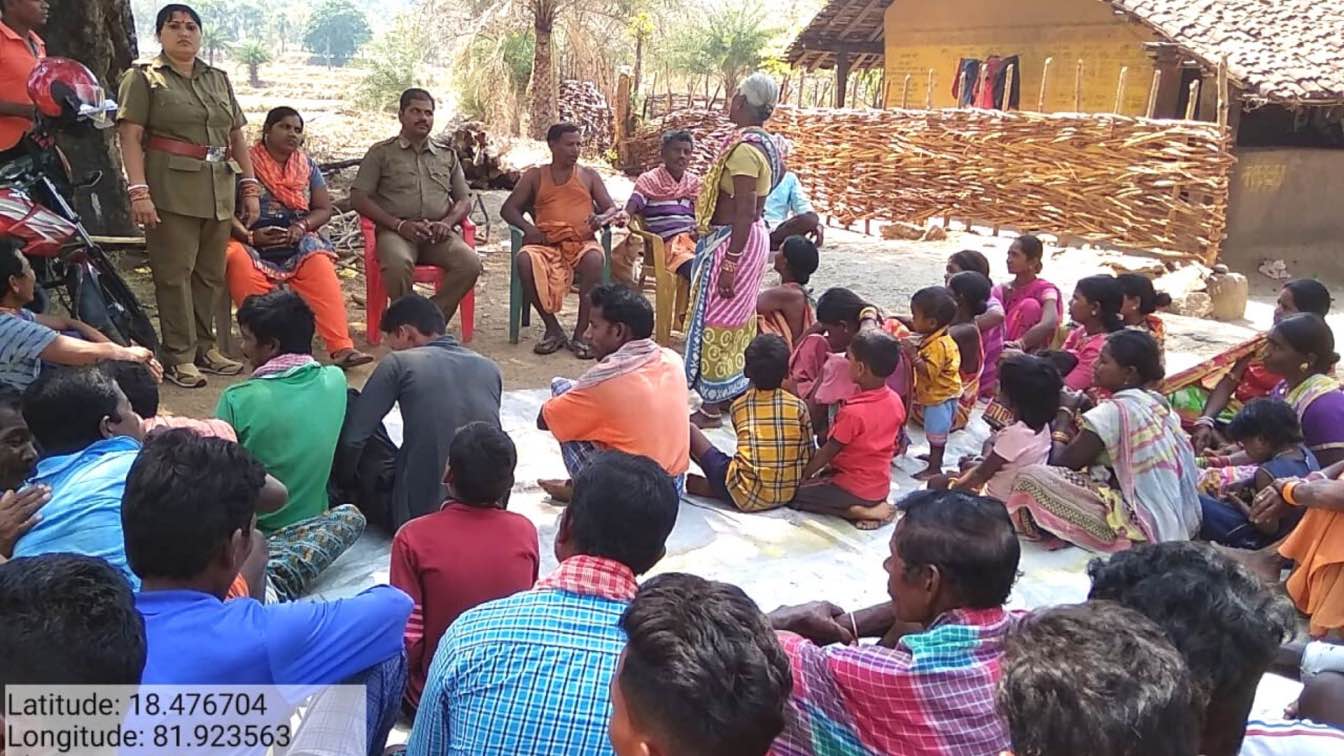The Similipal forest reserve in Odisha has been burning for more than 10 days. The fire that spread widely affected eight of the 21 forest ranges in the state. While the forest fires in this region are not new, the advent of summer causes an increase in fire incidents.
But this time, the scale of the fires is worrying, as the biosphere is home to about 304 species of birds, 164 species of butterflies, 94 species of orchids, 60 species of reptiles, 55 species of mammals, 38 species of fish and 21 species of amphibians.
However, the southern part of the state is the Malkangiri forest division that faces the same issues every year. But thanks to the two years of efforts by an IFS officer in the division, about 1,000 acres of forestland have been saved from going up in flames.
IFS Pradeep Mirase, divisional forest officer of Malkangiri forest division, took charge in late 2018. The first challenge he faced was the overwhelming number of forest fire incidents reported in the area.
“We had 2,152 fire incidents as reported by Forest Survey of India (FSI), which is an app that informs us about forest fires with its precise geographic locations along with its coordinates. This is done with the help of satellites. The fire affected 900 acres of land,” he says.
Pradeep says that the ecological and biological impact of such fires is massive. “These fires affect the local biodiversity endemic to the region, and it requires a long time to recover from the damages and loss,” he adds.
‘Humans trigger 99% fires’

The officer says that on many occasions, several small fires go unreported. “The satellites only detect fires which have high heat and are exposed for a prolonged period. Hence, it is important to arrest fire by knowing about them in the early stages and intervening locally,” he adds.
Pradeep says that a detailed analysis revealed multiple reasons that triggered the forest fires. “About 99 per cent of the incidents were triggered by humans, such as burning the agricultural residue in the fringes of the forest area, Mahul collection by local tribes called Bonda requiring lighting the area under the trees for fruit collection and trapping the wildlife with fire for hunting. The high summer temperatures that peak about 46 to 47 degrees Celsius fuelled by dry leaves also caused the fires,” he adds.
He says that it becomes challenging to arrest forest fires, especially in hilly areas where the air drag or air resistance along the slopes is more, and it begins to spread rapidly upwards.
Pradeep says that an additional challenge is posed with the forest spread across the Balimela reservoir, which is a Naxal affected region with just one bridge to connect the area.
The first step to intervene was to plan and anticipate forest fires. Pradeep set up teams of forest protection squads and equipped them with safety gear.
The department identified the 23 most vulnerable spots which needed to be attended to on priority. The officials created 500 km of forest lines in the area and increased the patrolling of ground staff. Six fire squads consisting of 60 members were deployed to attend the vulnerable points and douse the fire. “Along with safety gear and first aid kits, the staff was equipped with leaf blowing machines to cut the spread of fire. Recently, we introduced a fire extinguisher mounted on a vehicle which allows spraying water up to 20 feet,” he adds.
A dedicated team was assigned to reach out to the remotest part of the forest across the reservoir.
Apart from preparing the department, the officer approached locals for their support.
When Locals Join Hands

“In January and February 2020, we reached out to all the villages in the fringe areas to create awareness about the forest fires and their repercussions. Incentives were announced to encourage the residents to prevent fires. Another step was also to ensure the controlled burning of the forest for the livelihood of the locals. These fires were supervised and extinguished immediately after the villagers collected the Mahul fruit from the trees,” he says, adding, “It was urged to the villagers to refrain from hunting.”
After 125 meetings and awareness programmes, the villagers agreed to cooperate. The efforts reaped results as the department succeeded in reducing the cases to 1,160 affecting 383 acres of forest in 2020. “The fire points were reduced to half. Witnessing this, the locals cooperated further as they were motivated by the result and support from the department,” Pradeep says.
Additional efforts were pushed to further reduce the cases to 288 of fires, limiting its spread to 140 acres of the area until 8 March 2021.
Pradeep says that the curbing of cases was directly proportional to the interventions. “In 2018, about 25 per cent of incidents were attended and increased marginally to 28 per cent the following year. In 2020, the percentage increased to 90. At present, there are less than 100 cases reported daily. We intend to keep it that way,” he adds.
Edited by Yoshita Rao
No comments:
Post a Comment